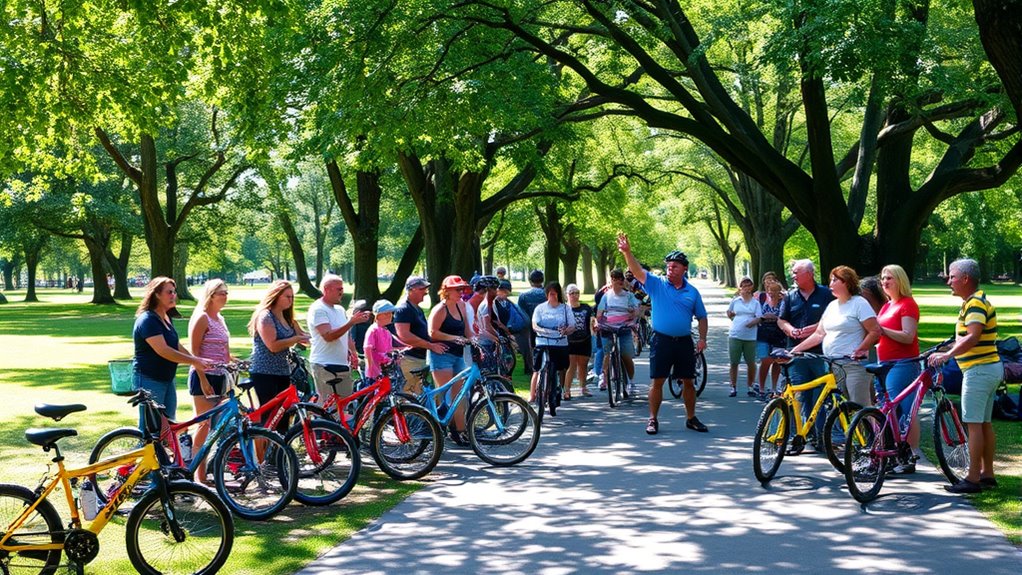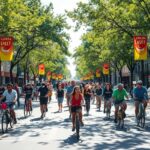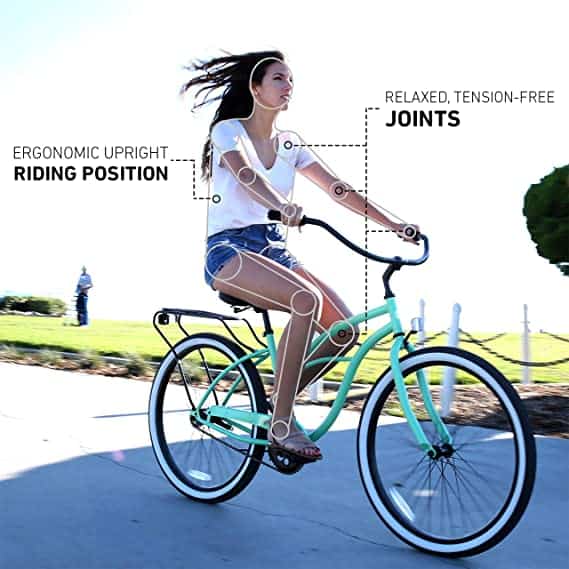To successfully organize community bike rides, plan well in advance by selecting safe, accessible routes and coordinating with local partners. Promote your event through social media, flyers, and local businesses to attract diverse participants. Prioritize safety by enforcing helmet rules, checking bikes, and encouraging responsible riding. Foster a welcoming vibe with inclusive activities, themed rides, and post-ride gatherings. Building strong partnerships and offering engaging events guarantee ongoing excitement—you’ll discover more tips for creating memorable rides as you continue.
Key Takeaways
- Plan routes carefully, prioritizing safety, existing infrastructure, and environmental impact, with thorough testing and risk management strategies.
- Promote events through multiple channels, including social media, local outreach, and partnerships, to maximize community participation.
- Ensure rider safety by enforcing helmet and visibility gear requirements, conducting equipment checks, and following traffic laws.
- Foster an inclusive, supportive culture by offering diverse ride options, training leaders, and encouraging community engagement.
- Organize themed and varied events, such as memorial rides or charity fundraisers, to increase interest and strengthen community bonds.
Advance Planning and Route Selection
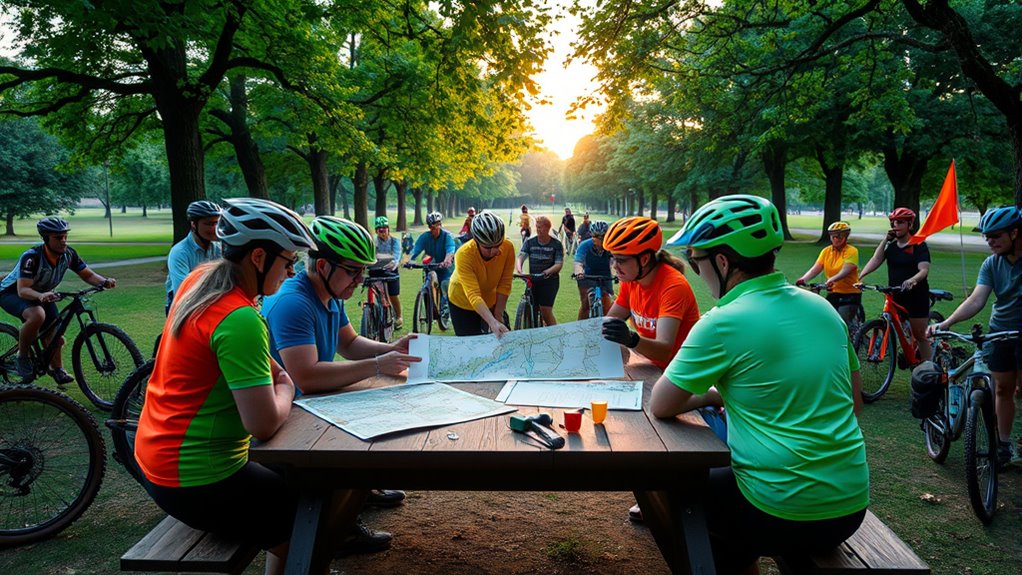
Effective community bike rides begin with thorough advance planning and careful route selection. You should allow at least 6 to 12 months for planning to guarantee all logistics are covered.
For multi-day rides, open registration 8 to 12 months early to attract participants and plan effectively. Think about marketing, volunteer recruitment, and route logistics throughout the year.
Set clear goals, such as fundraising or advocacy, to guide your planning process. Assign roles early—like volunteer coordinators or marketing leads—to keep everything organized.
When choosing routes, prioritize existing infrastructure like bike lanes and low-traffic roads for safety. Highlight proposed bike lanes to support advocacy.
Test your routes beforehand, checking for hazards like potholes or dangerous intersections. Proper planning makes your ride safe, enjoyable, and well-organized. Incorporating risk management strategies can further enhance safety and ensure a successful event. Additionally, considering environmental impact can help minimize your event’s footprint and promote sustainability. To improve overall organization, consider implementing space and resource management techniques to optimize the use of available assets and reduce waste. Incorporating vegetable juice benefits can also inspire sustainable choices in event refreshments, promoting health and environmental consciousness. Planning with community engagement in mind can increase participation and foster local support.
Building Inclusive and Welcoming Rides
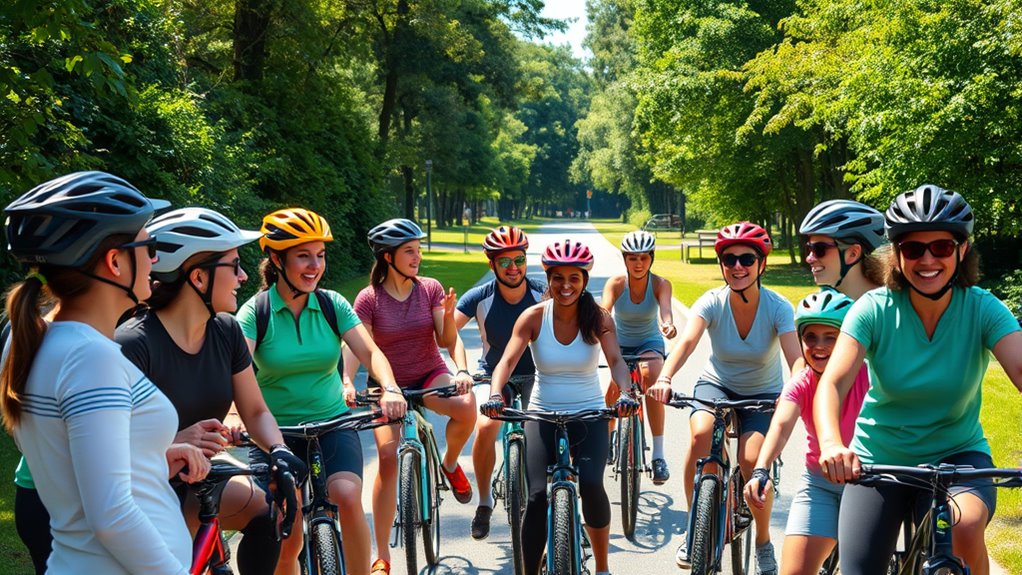
Creating a community bike ride that feels inclusive and welcoming starts with intentional planning. Use diverse visuals in your promotion to show that bike joy is for everyone, regardless of experience or bike type. Incorporating cost considerations such as affordable options for various budgets can help attract a broader range of participants. Hosting themed rides that celebrate different cultural backgrounds or interests can also foster a sense of belonging and excitement for diverse groups. Engage the community through forums where riders can suggest routes and themes, fostering ownership. Offer rides at various difficulty levels to accommodate beginners and seasoned cyclists alike. Advocate for bike-friendly infrastructure to support diverse needs. Guarantee your ride leaders are trained in inclusivity practices, and create feedback channels for continuous improvement. Additionally, incorporating sustainable practices such as encouraging eco-friendly transportation options for participants can enhance the community’s commitment to environmental responsibility. Recognizing the electric bike options available can also help appeal to those with different mobility needs or preferences, broadening participation. Moreover, understanding the importance of Cultural Intelligence can assist organizers in better engaging with diverse community groups and ensuring that the event truly feels welcoming to all. Incorporating community engagement strategies can further strengthen local support and participation.
Promoting Events Through Multiple Channels
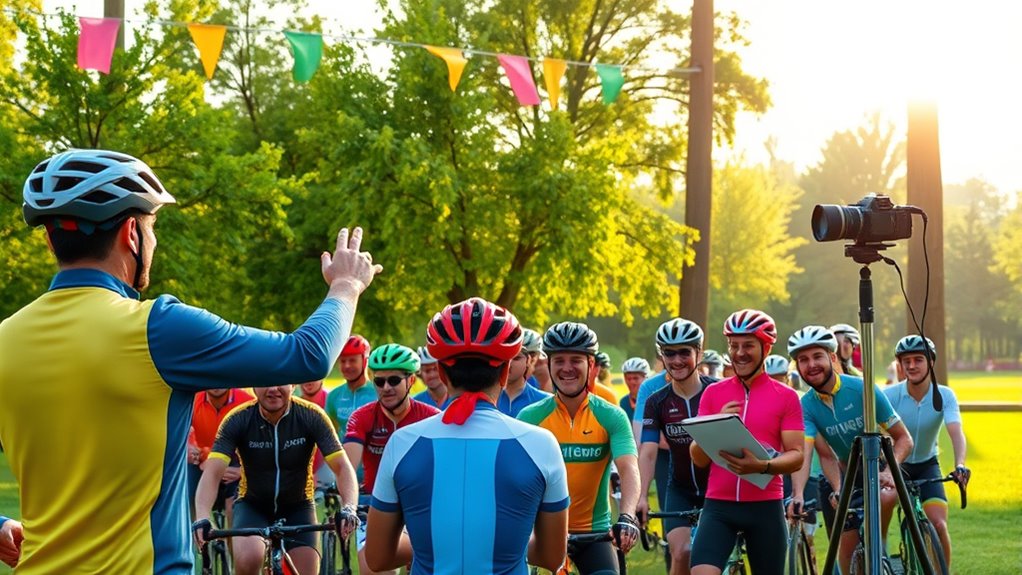
Promoting community bike rides across multiple channels guarantees broad visibility and higher participation. Use social media to create shareable event pages on Facebook or Meetup, and leverage themed hashtags like #BikeJamFam to encourage user-generated content.
Promote your bike rides across channels with social media pages, themed hashtags, and user content to boost visibility and participation.
Post diverse content, such as route previews, rider testimonials, and live videos, to build excitement. Tag local businesses and officials to foster partnerships and increase engagement. Schedule automated reminders via Instagram Stories or Facebook Events to keep participants informed.
Collaborate with local businesses, schools, and bike-share programs to reach diverse audiences and lower participation barriers. Distribute flyers at partner locations and in community spaces for hyper-local outreach.
Combining digital, grassroots, and traditional media ensures your event reaches a wide audience and maximizes turnout.
Ensuring Safety and Responsible Riding Practices
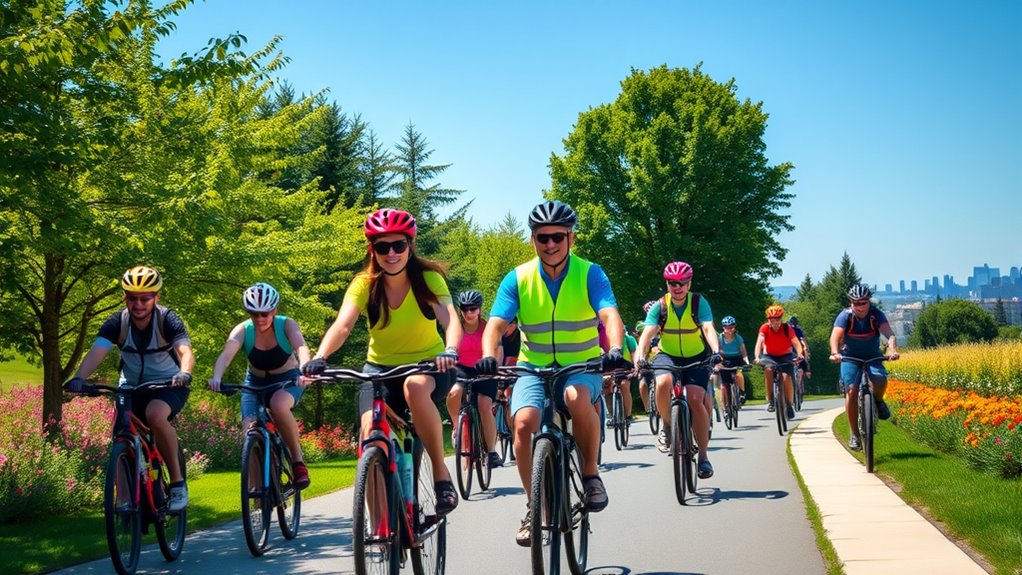
Ensuring safety and responsible riding practices are essential for a successful community bike ride. You should make sure everyone wears helmets, which considerably reduce head injury risks. Use front white lights, rear red lights, and reflectors in low-light conditions to boost visibility.
Before riding, check that brakes, tires, and chains are in good shape. Wear bright clothing during the day and reflective gear at night for better visibility.
Riders must stay outside parked car door zones, maintain proper lane positioning, and signal lane changes clearly. Follow traffic laws, including yielding at intersections and respecting right-of-way.
Plan routes that avoid high-traffic areas, especially during peak times.
Emphasize group communication, maintain safe spacing, and carry repair and first-aid kits for emergencies.
Engaging the Community and Local Businesses

Engaging the community and local businesses turns bike rides into vibrant events that foster connections and support local growth. You can organize themed rides to attract diverse groups and involve community members in leading rides, creating a sense of ownership.
Partner with local organizations and businesses to tap into existing networks, offering sponsorship opportunities or resources that benefit everyone. Promote your rides through social media and word-of-mouth to maximize reach.
Host “Bikes Mean Business!” rides to showcase nearby shops and restaurants, encouraging participants to visit local spots. Highlight the economic benefits by emphasizing how bike rides boost foot traffic.
Encourage businesses to promote the events, increasing visibility for both rides and local commerce. These strategies build stronger, more connected communities around cycling.
Creating a Consistent Ride Schedule
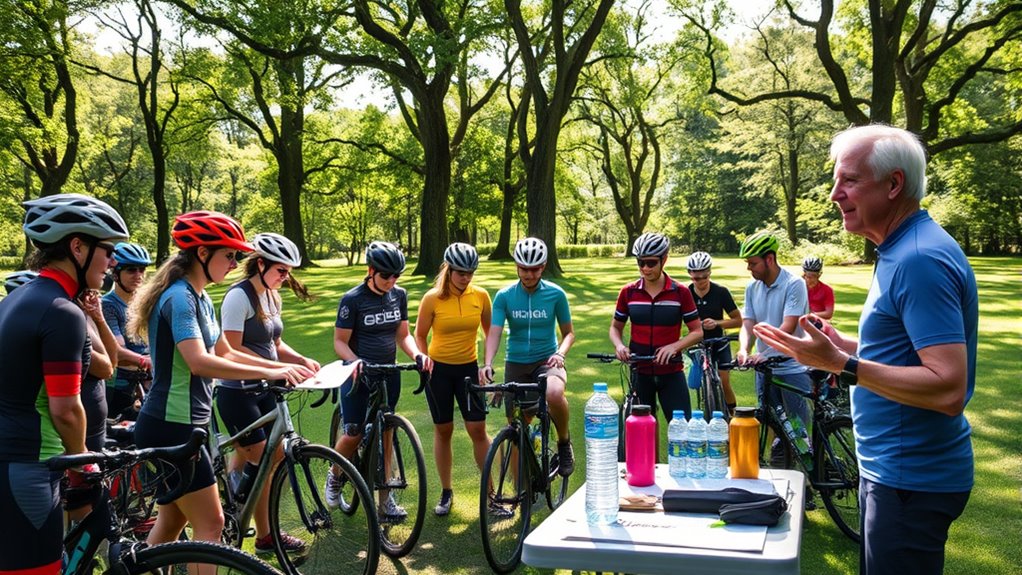
Establishing a consistent ride schedule is essential for building momentum and fostering a loyal cycling community. By setting rides on regular dates, like the first Saturday of each month, you create predictability that encourages participants to plan ahead.
Monthly rides help develop routine engagement and sustain long-term interest, as seen in the Providence Bike Jam model, which grew from 50 to 400 riders over four years through regularity.
Align your rides with local events such as farmers markets or festivals for added synergy. Use calendar-blocking to avoid conflicts with major holidays or competing activities.
Adjust routes seasonally—shade-covered paths in summer and sheltered trails in winter—and consider themed rides to keep participation high year-round.
Consistency and thoughtful planning are key to growing your community.
Fostering Social Connections and Activities
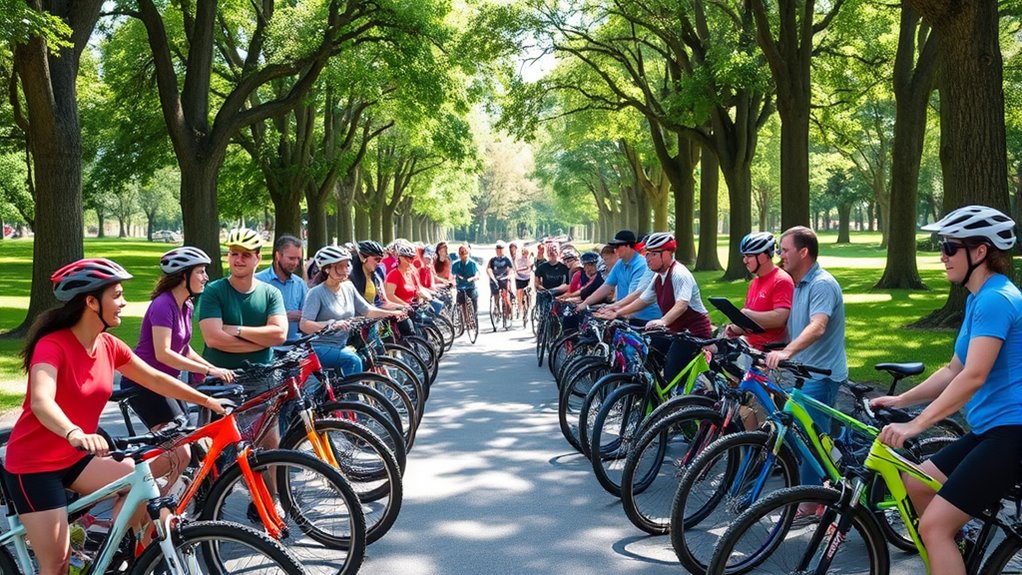
Building strong social connections is essential for creating a vibrant cycling community. You can promote inclusivity by organizing structured group categories—beginner, intermediate, and advanced—so everyone feels supported and challenged. Pairing riders as mentors encourages knowledge sharing and confidence building.
Implement no-drop ride policies to ensure no one gets left behind, fostering trust and camaraderie. Hosting skill-building workshops, like bike maintenance or drafting techniques, boosts participation and confidence.
To deepen bonds, organize post-ride meetups at local cafes or themed events such as seasonal rides or charity fundraisers. Creating online discussion groups extends engagement beyond physical rides, while collaborating with local businesses through discounts strengthens community ties.
These activities make your rides more welcoming, inclusive, and fun for riders of all levels.
Training Leaders and Volunteers
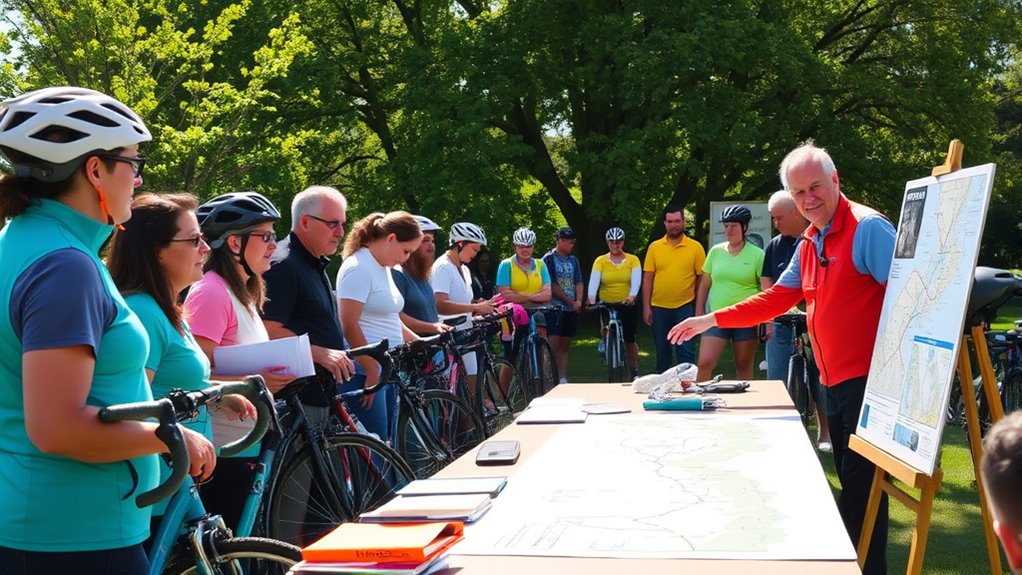
Training leaders and volunteers is essential to running safe and effective community bike rides. The BICP Ride Leader course takes about 8 hours of online work, including videos, reading, and a final quiz.
To qualify, you need a current First Aid and CPR certification, along with at least three years of mountain biking experience. The training emphasizes leading safe rides, evaluating rider skills, and preparing emergency plans.
It also covers group management, effective communication, and route planning tailored to different skill levels. Prerequisites include volunteering for 40 hours with local groups and basic trail repairs.
Well-trained leaders can better manage safety, foster community, and ensure rides are enjoyable for all participants.
Maintaining Interest With Diverse and Celebratory Events

To keep community bike rides engaging and memorable, offering a variety of events and themed celebrations is essential. Provide multiple route options, such as casual 11.6 miles, 23.1 miles, and advanced routes, passing landmarks like Cedar Rapids’ trails and NewBo City Market. Incorporate stops at local establishments to encourage socializing.
Offer diverse route options, passing landmarks like Cedar Rapids’ trails and NewBo Market for an engaging community ride.
Tie rides to awareness causes, like Spokes of Hope supporting cancer patients, and include memorial elements honoring community members. Host post-ride gatherings with food trucks, prizes, and live entertainment.
Organize pre-ride skills clinics and mechanical support stations for safety. Collaborate with local initiatives and sponsors for challenge segments and cultural programming.
Incentivize participation with contests, VIP experiences, and social media recaps, keeping the energy high and participants engaged.
Frequently Asked Questions
How Can I Effectively Gauge Community Interest Before Planning a Ride?
To effectively gauge community interest, you should start by creating surveys using platforms like MetroQuest to gather input on preferences and bike infrastructure needs.
Engage local groups and social media to spread the word and encourage participation.
Additionally, hold community meetings or events to hear directly from residents.
This approach helps you understand what people want, builds excitement, and guarantees your ride caters to the community’s interests.
What Are the Best Ways to Handle Diverse Skill Levels in One Ride?
Picture your ride as a vibrant tapestry, woven with riders of different stripes. To handle diverse skill levels, clearly label each ride’s difficulty, like guiding stars in the night sky.
Break into subgroups with paced options, ensuring everyone feels safe and included.
Communicate openly about terrain and expectations upfront, creating a welcoming atmosphere where every rider, from novice to pro, can enjoy the journey together without feeling left behind.
How Do I Secure Permits or Permissions for Public Cycling Events?
When you want to secure permits for public cycling events, start by understanding the specific requirements in your area, including USA Cycling rules if applicable.
Prepare all necessary documents like site plans, proof of insurance, and safety protocols.
Submit your application well in advance, coordinate with local agencies, and obtain approvals from property authorities.
Leveraging partnerships with local clubs or the organizing body can also help streamline the process.
What Strategies Ensure Long-Term Engagement Beyond Initial Participation?
Think of your community bike rides as a garden that needs constant tending. To keep it thriving, you should build strong roots through regular events, involve local volunteers, and partner with neighborhood businesses.
Listen to your riders’ feedback, adapt your plans, and add fresh ideas.
Keep the momentum alive by fostering relationships, celebrating milestones, and ensuring everyone feels seen and valued, so your community stays connected long after the ride ends.
How Can I Measure the Success and Impact of a Community Bike Ride?
To measure your community bike ride’s success, track attendance, demographic diversity, and retention rates to gauge engagement.
Collect participant feedback through surveys to understand their experience.
Monitor infrastructure improvements, bike path usage, and awareness of cycling resources.
Assess health benefits by comparing pre- and post-ride data, and evaluate environmental impacts like reduced emissions.
Analyzing these metrics helps you see the ride’s overall impact and areas for growth.
Conclusion
By staying organized and enthusiastic, you’ll turn your community bike rides into a vibrant tapestry of connection and fun. Remember, each ride is like a new chapter in an ongoing story—full of potential and promise. With thoughtful planning, inclusive spirit, and community engagement, you’ll create a movement that keeps wheels turning and friendships growing. So, keep pedaling forward, and watch your shared passion for cycling blossom into something truly special.
